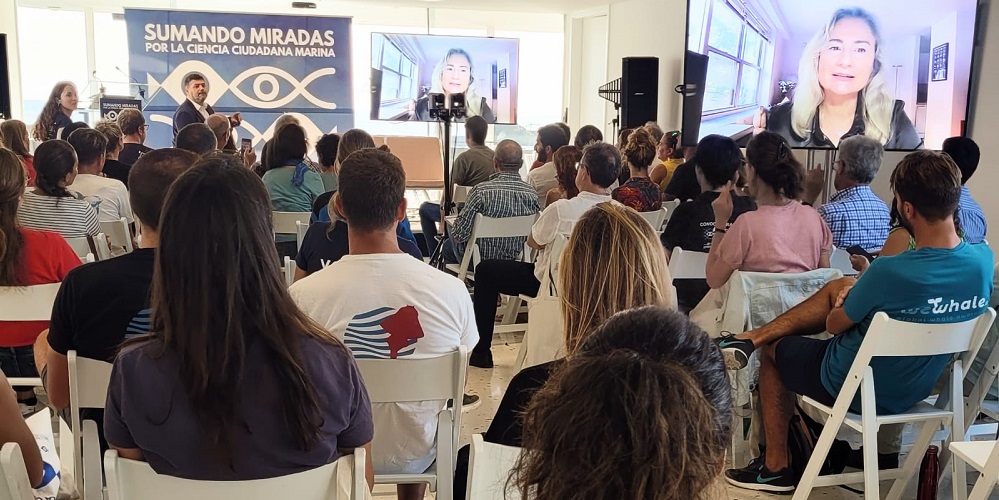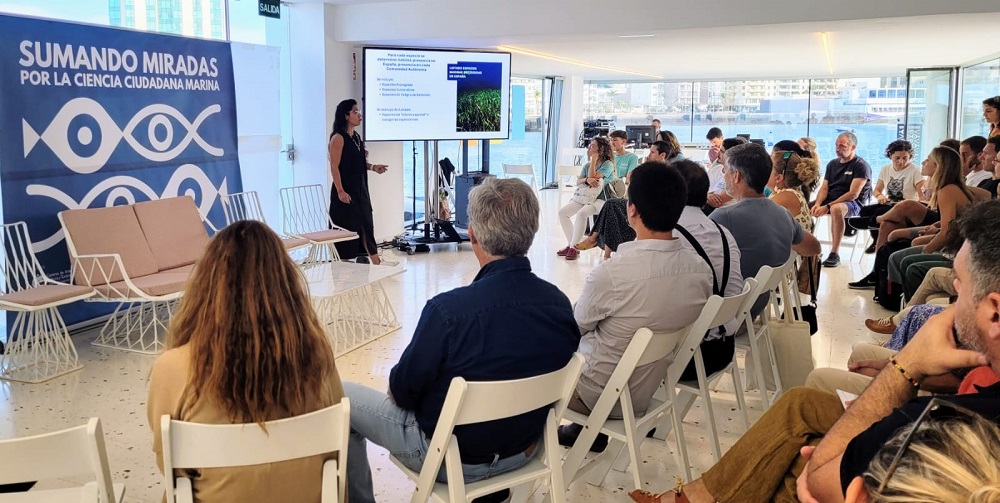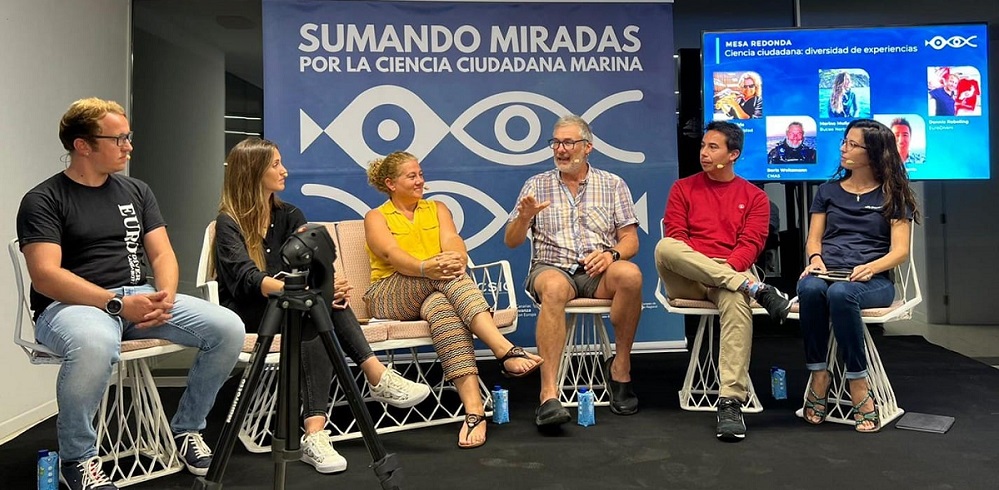The event ” Sumando miradas por la ciencia ciudadana marina ” organized by Observadores del Mar and RedPromar has been a success and opens the way for citizen science to be a support tool for marine biodiversity monitoring programs at the national level.
From Observadores del Mar of the CSIC and the RedPROMAR of the Government of the Canary Islands, both marine citizen science platforms, we have established an alliance to continue promoting, collaboratively, marine citizen science for the monitoring, knowledge and conservation of marine biodiversity.
On November 7th and 8th, the event took place in Lanzarote to divulge this alliance and establish the framework for national collaboration. The meeting brought together representatives of state, regional and municipal public administrations, research centers from all over the territory, entities and citizens. The common goal: to make citizen science useful for marine conservation.
Pura Fernández —CSIC Deputy Vice President of Scientific Literacy and Citizen Science— stressed that “the creation of this alliance corroborates the essential collaborative, cooperative and supportive nature of science, which must always be for citizens, who are essential to grow and get stronger.” Words that strengthen the commitment to marine citizen science in research.
The event continued with a local look by historian Mario Ferrer, followed by Emilio Soler (OC-HABs) who spoke about harmful algae, providing a microscopic look at the marine environment. Adolfo Marco —researcher at the EBD-CSIC— highlighted the increase in turtle nesting on the Spanish coast, and the importance of training citizens to report sightings of adult turtles (healthy or injured) or nests.
Next, a round table of experiences took place in which the connection that citizen science has between many sectors of society was made visible. Boris Weitzmann (CMAS) and Marina Muñoz (Buceo Norte) agreed that “important discoveries can be made in leisure dives”; Ana Liria (ADS Biodiversidad) and Claudio Barria (CatSharks) —both researchers— presented examples of new findings thanks to the data provided by the public. The data from Dennis Rabeling (citizen scientists and EuroDivers Lanzarote) who has so far reported 836 species was surprising.
Joaquim Garrabou —researcher at the ICM-CSIC and general coordinator of Observadores del Mar— and Olga Ayza —technician from the Biodiversity Service of the Government of the Canary Islands and coordinator of RedPROMAR— highlighted
the value of the alliance between the two marine citizen science platforms to promote this discipline as a support for monitoring programs of marine biodiversity at the national level.
Marine citizen science can boost protected species monitoring programs
In Spain there are 259 protected marine species. However, only 76 of them have a monitoring program. In addition, the information from the monitoring programs is fragmented among the different autonomous communities and is difficult to access, which complicates the exploitation of these data.
These are the most relevant conclusions of the report presented by Macarena Marambio —researcher at ICM-CSIC— at the beginning of the second day, dedicated to a technical workshop. The importance of having monitoring networks for marine species was highlighted in order to obtain the necessary information to respond to national and European directives. Citizen science is considered as a tool to meet this objective and serves to strengthen links between citizens and the administration.
Next, representatives of different Autonomous Communities presented their experiences and approaches on the application of marine citizen science in public administration. During the workshop, we discussed opportunities, difficulties and recommendations in order to accelerate the implementation of citizen science activities to support marine biodiversity monitoring programs. All these recommendations will be reflected in a consensus document that will mark the lines of collaborative work throughout the territory.
The event can be watched on YouTube from this link.





